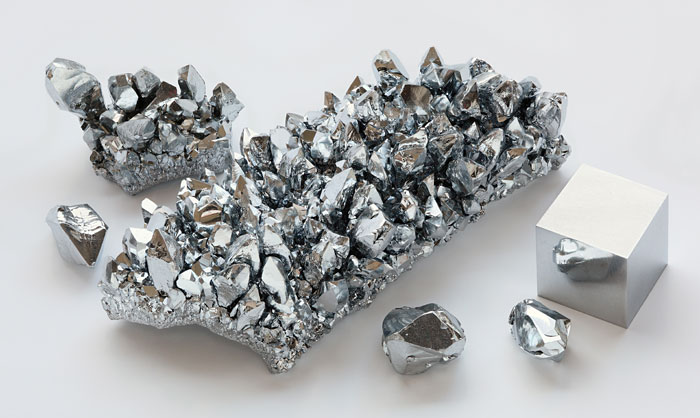The following outline by London-based Roskill Information Services examines diverging trends in the chromium market and how they may affect future supply, demand and prices.
At the end of 2013, ferrochrome prices remained near four-year lows. European benchmark charge chrome prices were rolled-over at US112.5¢ per lb. in the fourth quarter, while Chinese domestic spot high-carbon ferrochrome prices stood at US83¢ to US85¢ per lb. World ferrochrome consumption reached a record level of 9.8 million tonnes in 2012, however, and demand was estimated to have risen by another 6% to 10.3 million tonnes in 2013. The diverging trends reflected the expansion in the Chinese ferrochrome industry, low ore prices and currency depreciation in leading exporting countries.
In 2012, China overtook South Africa to become the largest ferrochrome producer worldwide. Chinese output of 3.12 million tonnes accounted for 33% of the world total, a rise from 13% in 2005. With low chrome ore reserves and production, Chinese ferrochrome output has grown 20% annually based on imported raw materials, mainly from South Africa but also from Turkey, Oman and Albania. Imports from South Africa in the first nine months of 2013 already exceeded the 2012 total. Concern over displaced South African ferrochrome production by Chinese material smelted from South African ores and concentrates has stimulated debate about introducing export tax or quotas.
Demand for ferrochrome reflects trends in the stainless steel sector, which accounts for 80% of consumption. Over the past five years, world consumption has risen by 5% per year to an estimated 9.8 million tonnes in 2012. Similar growth is forecast through to 2018, slightly outpacing the rise in stainless steel production due to the shift towards steels with higher chromium content and marginally lower scrap ratios. China will keep driving demand, increasing its share of the world market from 46% to 53% over the next five years.
Oversupply could lead to industry consolidation
Future Chinese ferrochrome demand will be met by both increased domestic supply and imports. Domestic production capacity is projected to rise annually by 1.8 million tonnes over the next five years, with output increasing by 30% to 4.2 million tonnes over the next two years.
In order to secure raw material supply, Chinese companies have invested in chrome-ore operations in South Africa, Zimbabwe, Turkey, Albania, Pakistan and the Philippines. Growth in ferrochrome demand is unlikely to translate into higher prices in the short-term. Planned capacity expansions in China, Finland, Kazakhstan, Oman and South Africa could raise the world ferrochrome supply by more than 2 million tonnes between 2012 and 2014, resulting in a potential oversupply of up to 700,000 tonnes of ferrochrome in 2014. In the longer term, the ferrochrome market is forecast to move into balance through 2018.
The net increase in ferrochrome supply is projected to be 3.5 to 4 million tonnes per year over this period, lower than the total announced potential capacity, as oversupply on the world market, higher production costs and power supply problems in leading producing countries result in the closure of less competitive plants or in consolidation between producers.
The market for both chromite and ferrochrome would be affected by any restrictions placed on future South African chromite exports, however, as introducing export duties or quotas on chromite raw materials for Chinese ferrochrome producers would exert upward pressure on prices.
Chromium chemicals buoyed by Asia while metal soars on aircraft build-out
The long-term decline in demand for chromium chemicals on environmental grounds in industrialized countries has been offset in recent years by growth in Asian markets. Leather tanning and metal finishing are the main applications for chromium chemicals, accounting for half of global demand. Forecast growth of 2% per year suggests world consumption will rise from 700,000 tonnes of sodium dichromate equivalent in 2012 to 780,000 tonnes in 2018, still below current installed viable capacity of 860,000 tonnes per year.
In contrast, world consumption of chromium metal rebounded after the 2008–2009 recession to peak at 43,000 tonnes in 2012. Driven by growth in aircraft deliveries, increased production of wide-body builds and higher demand for nickel-based superalloys to raise fuel efficiency, demand for chromium metal is projected to rise by more than 4% per year through 2018. Supported by higher capacity use rates and production costs, spot prices of 99% chromium metal are estimated to firm from US$8,700 per tonne at the end of 2013 to the early 2012 level of US$12,000 per tonne, with prices of 99.4–99.9% chromium material reaching US$14,500 per tonne.
— Roskill’s latest chromium report, Chromium: Global Industry Markets and Outlook, published in January, provides a detailed review of the industry, with subsections on the activities of the leading producing companies. It also analyzes consumption, trade and prices. The report is available at www.roskill.com/reports/steel-alloys/chromium.


Be the first to comment on "Roskill: Chromium market growing, but producers face headwinds"